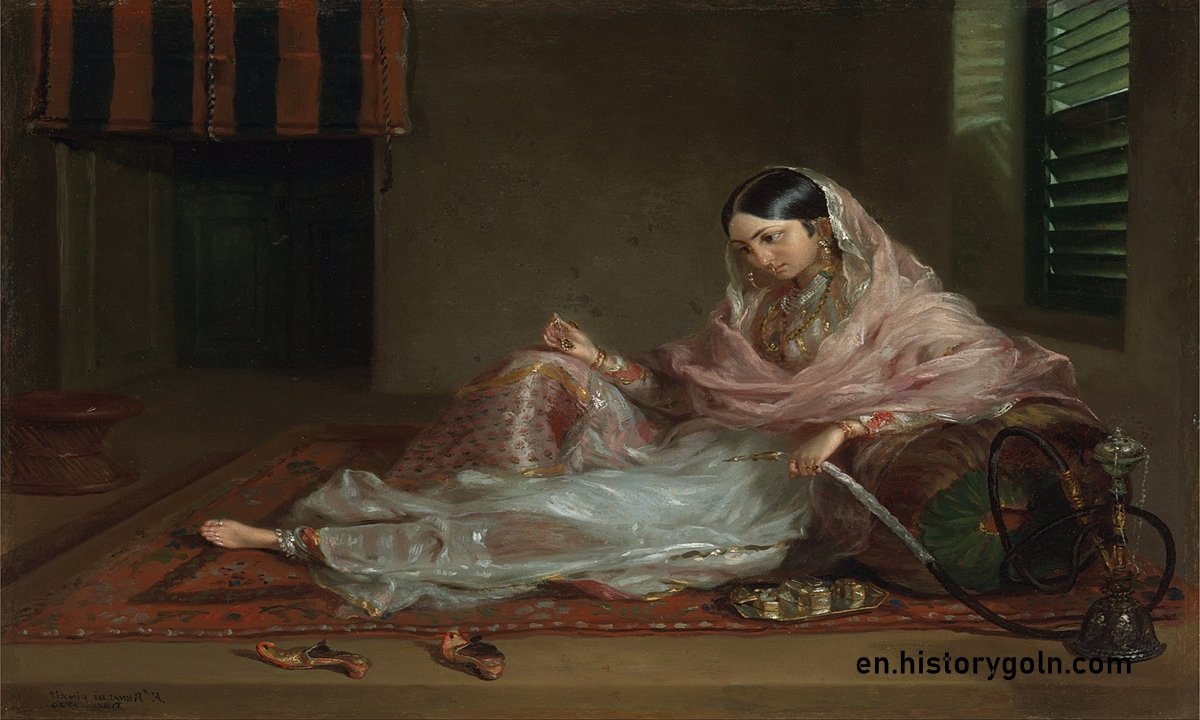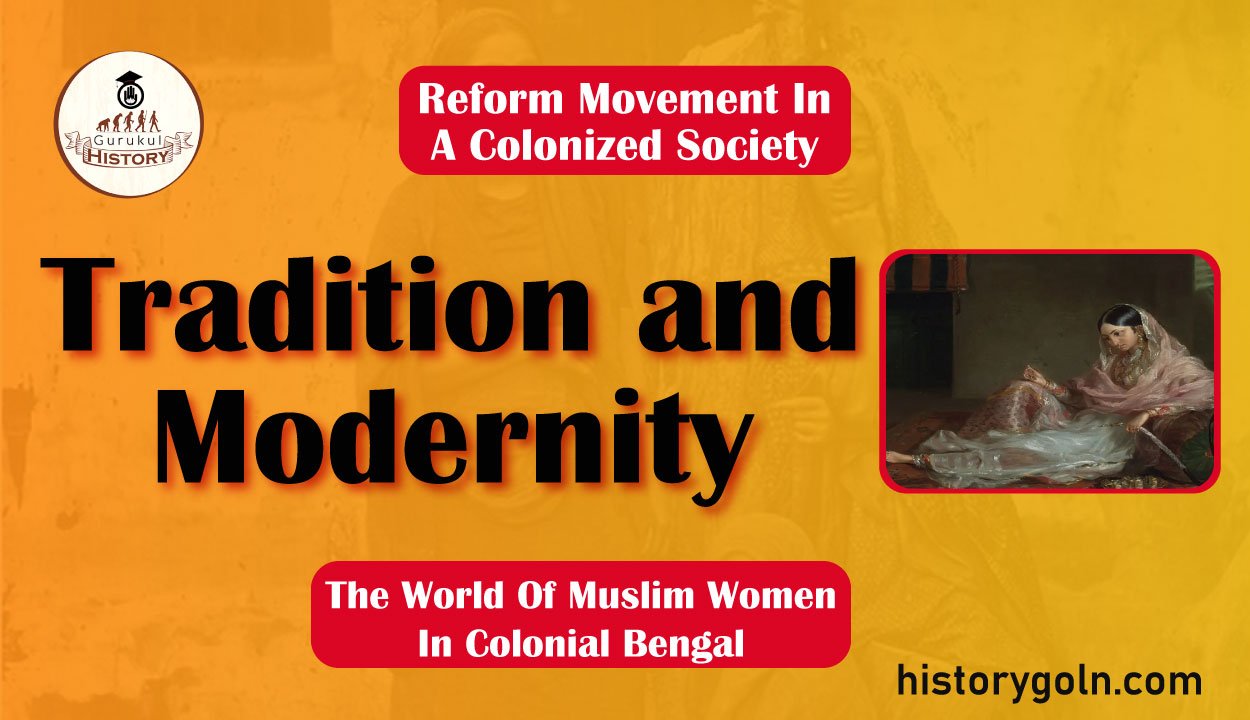Today our topic of discussion is Tradition and Modernity .
Tradition and Modernity

The emergence of a new female personality in colonial Bengal was an impor- tant episode in the social and cultural history of this region and a signi- ficant development in South Asian gender relations. The present work focuses on the transition made by women of the emergent Muslim middle class in Bengal from the nineteenth to the twentieth centuries and the forging of the new personality of the modern gentlewoman or the Muslim bhadromohila.
The transition was effected through a process of social change often referred to as modernization as contrasted with tradition. Much ink has been spilled over the terminology and modernization theory itself comprises a many-faceted discourse.
For ‘modernity’ and ‘tradition’ are concepts which, despite the uncer- tainty of the constructed duality, have pressed themselves insistently upon historians of colonial Bengal. Sumit Sarkar, for instance, writes:
Another important but neglected theme is the ideological conflict between modernism and traditionalism between an attitude which broadly speaking demands social reform, tries to calculate things and ideas by the criteria of reason and present day utility… and a logically opposite trend which defends and justifies existing social mores in the name of immemorial tradition and the glorious past…1
Most historians including Sarkar – are, however, aware of the dangers of a mechanical separation of distinct trends and advocate its use as an abstract model for analytic convenience. The problem arises out of the interpenetration of modernity and tradition’ in the process of real historical change, and its complexity when the focus is on a phenomenon such as the changing world of Bengali, Muslim women in the late nineteenth and early twentieth centuries.
One model of change for instance, promoted by the orthodox/neo-conservative school, took as its premise the ideal and pure condition of women under what was perceived as a pristine and uni- dimensional Islam and Scriptural authority. Yet the model enjoined a certain ‘re-forming in its insistence on order and method in the new kind of Muslim household.
On the other hand, even the most radical proponents of a rational and humanistic reconstruction of gender relations within the Muslim community took care to cite scriptural authority as they interpreted it, in their model of reconstruction. In that changing world, the incipient rational, humanist concepts and the impulse for neo-conservative reform existed cheek by jowl.
Ghulam Murshid, in his seminal work The Reluctant Debutante, accepts and uses the term, with due regard to the debate on it. Following social scientists studying culture, he has taken the term to mean growth of new knowledge and its application in service of human society, self reliance and achievement orientation, development of science, technology and creativity, of public opinion and secular interests, and an inclination to measure the world and believe it can be measured, etc. To Murshid, the women he studied displayed many of these characteristics.

Meredith Borthwick, whose work followed Murshid’s and dealt with the same subject within the same time frame, has not dwelt at length on the subject of modernization. She has used the term “process of social change under colonial rule” instead. We have used the term (along with some others) as ‘given’ or boundary concepts which frame my study and are end-products of other researches which therefore fall beyond the scope of this work.
When speaking of reformism in Bengal, the liberal movements of the nineteenth and twentieth centuries which wanted to change society along modified western lines, are usually indicated. But what is generally ignored is the fact that a neo-conservative movement gained momentum which was also ‘reformist’ in nature, though perhaps in a retrogressive sense.
In Bengal, the latter was closely allied to the wave of fundamentalist activity which swept over the region at the time. The ‘unreconstructed’ sharif culture against which reform, orthodox or liberal, was directed, was in many ways a more tolerant, heterogenous and open-minded culture finding expression in the poetry of persons like Lalon Shah and Mirza Ghalib.
The neo-conservative discourse tried to accommodate the changing environment of the nineteenth century by re-instituting a strengthened and purified patriarchal order. But it differed from the liberal project in that the latter was more eclectic.
Where the traditional orthodox or funda- mentalist groups would eschew Ghalib’s sensual poetry and Lalon’s syn- cretic lyrics (the conservative reformers at Deoband proscribed Ghalib’s poetry; those in Bengal condemned Lalon’s songs and social message), the liberal camp accommodated these forms after some modifications. This was best exemplified in bhadrolok appropriation of Lalon Shah’s works. The coded philosophy of the Lalon cult was shorn off its true power and dome- sticated to suit the parlour culture of the new elite thereby transmuting an unusual philosophy for living into middle class spirituality.
This most succinctly illustrated the capacity as well as the limits of the modernity 3Meredith Borthwick, The Changing Role of Women in Bengal 1849 1905, (Princeton: Princeton University Press, 1984), p.xi.

preached by Bengal’s liberal bhadro culture. It created more space for men and women and forfeited some. These are the complexities that must be borne in mind when speaking of the ‘modern’ and the ‘traditional’. From this angle it would be more fitting to talk of social change rather than modernization.
But perhaps the most cogent reason for the latter’s usage may be found in the records left behind by the men and women who inhabited those times. Many of them thought of themselves as ‘modern’, or on the brink of modernity. They thought they were leaving behind a traditional and narrow world for a more free and glorious one.
See more:
